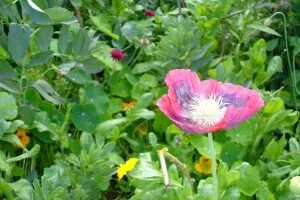
Have been sitting by the woodburner browsing seed catalogues, dreaming of planting chop suey greens and nigella persian jewels. With a mug of tea, or better still, glass of wine handy, planning tasty and attractive plant combinations has to be one of my favourite winter evening activities. Maybe the fresh lime green of lettuce seedlings next to red cabbage, dill amidst cornflowers or the lovely rich Autumnal colours of curly kales combined with red ‘Treviso’ chicory.
Clearing more ground in the garden in readiness for all my planting I keep stumbling on lots of burgeoning life. Snowdrops of course, sunny yellow celandines, hellebores and a few cowslips keep taking me by surprise. And lots of hardy perennials; both veggies and flowers are showing strong signs of bursting into life.



It all encourages me that I must get my own act together. So I’ve been stirring from the warm sofa next to the woodburner to sort out my seed box. I once dropped very heavy hints, with a birthday approaching, about this lovely Burgon & Ball seed box.
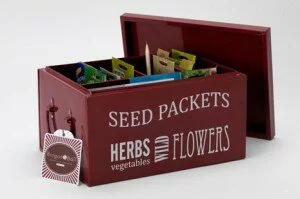
This is what I was given: 
Decorated by Ruby, with copious amounts of glitter (which leaves a trail whenever my seed box is moved) it’s obviously a lot more personal than the stylish seedbox I’d coveted. A seedbox with character. Looking at the state of it now, with my packets of seeds crammed in any way they’ll fit, it’s probaby more suited to me too.

I always start off at this time of year with good intentions towards my seeds. Sorting through them, discarding any that are out of date and putting the remaining seed packets in order of when they’re ready to plant (I have cardboard dividers for each month) is very satisfying.
They obviously don’t stay like this for long though. Once I start planting, I don’t know quite how it happens but my seed box rapidly descends into chaos. Many packets live in the pockets of my old fleece a bit too long, rarely even making it into the.seed box. But ever optimistic, I’ll be filing my new arrivals with all good intentions.
There are some really interesting seed companies that make browsing for seeds particularly addictive. I love the way that it’s not uncommon now for descriptions of vegetable seeds to emphasise looks, not just productivity.
Otter Farm waxes lyrical about Polestar runner beans: “Good looking with beautiful and delicious flowers, this is my desert island bean.”
Scarlet Emperor runner beans are described as, “..usually purple with dark mottling, encased within long, slender green pods but they are most famous for their beautiful scarlet flowers – they were originally grown as an ornamental plant, so you can be sure they’ll add something beautiful to your garden.” They taste good apparently too!
I’ll definitely be growing Crimson Flowered broad beans again – they scored highly on looks, productivity and taste in my garden last year.

|
The Organic Gardening Catalogue also has a great selection of heritage veggies that will look as beautiful in the garden as they hopefully will on the plate.
This is where I’m going to concentrate my efforts this year; after a dismal potato harvest and pathetic tomatoes, I’m trying to think carefully about what grows easily here, what we love to eat and what looks beautiful.
Much as I’m tempted by all the wonderful heritage varieties of tomatoes and tomatilloes, they’re going to have to wait, along with aubergines, peppers and chillis until we have a greenhouse. If I find myself drawn towards a particularly tempting packet of tomato seeds, I’m going to remind myself of the tasty (and cheap) tomatoes grown by a great farmshop just down the hill.
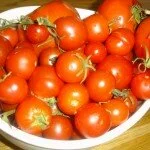
Instead, I’m going to continue to grow lots of chard, cavolo nero, kale, salad crops and herbs, obviously all mingling with pretty flowers – some edible, some purely for frivolous decoration. Talking of which, I’m very tempted by the lovely looking Flamingo Pink leaf beet but wondering how much less productive it will be than the white stemmed variety, which is still going strong after the snow.
Lots of beans too. Runner beans, french beans, broad beans and borlotti are all popular to eat in this family, and they freeze well if there’s a glut. We’re still eating some of the broad beans and runner beans I picked last summer.
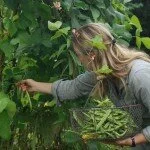
The borlotti tend to be productive in rubbish soil too so are useful for those newly cultivated areas that we’ve run out of compost for. And the novelty value of the purple varieties of beans tends to go down well with Ruby. With me too; varieties such as Blauhilde or Purple Teepee snaking up a rustic wigwam definitely add beauty to the garden in my view.
I fancy making a tall wigwam of runner beans with a den for children underneath too. But will have to see if my thoughts on this are more enthusiastic than they are practical.
Below the beans, apart from rambling patches of nasturtium and calendula, I’m going to grow squash. Having reluctantly decided that butternut squash (one of my favourites for flavour) doesn’t like our hill, I’m going to try Hubbard, Uchiki Kuri and Kabacha Squash this year. In the hope that I’ll have a bountiful supply to last through next winter, enabling me to cook lots of noodles with squash and try more of Louisa at chez foti’s lovely squash recipes.
Seeds of Italy have some great salad seeds that would grow quickly while my squash get established. Something about their website makes me dream up meals to cook with my harvest and I’m also drawn to the ‘Easy to Grow’ range, including delicious endive, chicory and basil. There are pictures of a mother and daughter happily planting together on the packets of this range but I have to admit that the appeal of the ‘Easy to Grow’ label has more to do with my shoddy gardening than it does to my motherly instincts.
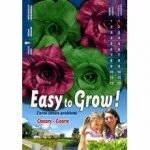
More cabbages and brussels are on my list too, particularly as there are so many of Trine Hahnemann’s lovely Nordic recipes I’m keen to try. Obviously not grown in stark rows on their own. I’ve been getting inspiration from Joy Larkcom’s brilliant ‘Creative Vegetable Growing’ and loving her ideas for planting red orache among red cabbage or interplanting red cabbage with spinach, flanked by leeks and with rows of lettuce at the edge. I like the idea of making use of the space between slow-growing brassicas and leeks with crops which will grow (and be eaten) quickly and look attractive in the meantime. And I’m totally inspired by this description by Joy of Hadspen garden:
“the sort of exuberant, carefree garden where nasturtiums romped through the sweet corn, self-sown verbena bonariensis struck a purple pose alongside red cabbage and pumpkin tendrils saucily embraced the runner beans … seedling rhubarb stood out starkly against the giant umbelliferous heads of angelica.”
I can dream!
|
Encouraged by Joy Larkcom to think of more combinations of veggies and flowers that will romp happily around the garden together (or fight for space could be more likely in my case!) I’ve been very tempted by Benjamin Ranyard’s lovely selection of flower seeds at Higgledy Garden.

Higgledy Garden has a great collection of bee friendly flower seeds; as our bee population are declining at an alarming rate they seem a great idea – they come with free postage and in compostable packets too. And there are some lovely hardy perennials, my favourites to fit in with lazy gardening ways.
It’s also worth a look at the Higgledy website purely for a good read. I fear that just as I”m drawn to vegetable varieties by descriptions of their showy/often blowsy flowering qualities, Benjamin’s wordsmithery is encouraging me to blow my seed budget on flowers for cutting. For instance, on Aquilegia ‘Nora Barlow’:
“Not all Aquilegias are much cop for cutting. Not true of ‘Nora Barlow’ who despite her rather dower name is actually one of the most striking Aquilegias I have ever come across. Flower heads start of as tight green buttons and then explode into cream and purple fireworks. Ding dong!”
Then there’s cookery books. My current favourites, ‘the Nordic Diet’, ‘Jerusalem‘ and Sarah Raven’s ‘Garden Cookbook’ have so many recipes I’m keen to eat this year that they’re influencing my seed planning as much as gardening books. And surely that’s just as it should be.
What’s the point of growing masses of productive plants that aren’t exciting to eat? Whereas looking at recipes for kale salads, broad bean kuku (a lovely frittata-like dish from ‘Jerusalem’) and borlotti bean brandade concentrates my mind on what I’m keen to grow and eat this year.
Having been dithering over whether to grow maincrop potatoes following such a wet summer last year (and plenty of blight) I read a great article in The Telegraph by Mark Diacono on how to ‘Grow spuds with your cook’s hat on.’ Mark’s ideas about choosing only really delicious varieties to grow that suit your favourite recipes convinced me to concentrate on varieties of new potatoes that are particularly delicious freshly dug and waxy salad potatoes that are cropped before blight has chance to appear.
Dreaming of bringing those first few precious early summer goodies into the kitchen in fact.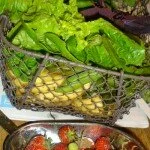
But before I get too carried away with new varieties of seed potatoes, perennial flowers and new vegetable and fruit seeds, I’m also determined to make good use of what I already have. Looking at the envelopes of seeds I saved myself last year (mostly the very easy nigella, calendula, poppy) I’m reminded of the poppy seeds I kept for the kitchen. The needs of my tummy mingle with gardening planning again and I’m planning culinary uses for my poppy seeds. Would welcome any new ideas. These are my current favourites:
Uses for Poppy Seeds:
– Sprinkle on home-made flat bread and white rolls
– Make the Garden deli’s mixed seed loaf
– Nigel Slater’s Beetroot and Poppy Seed cake
– Try this easy looking bagel recipe and sprinkle with poppy seeds.
Think I’ll quickly use up my poppy seed stash if I try all of the above. Good job they’ll soon be self-seeding generally around the garden again. And that this messy state of affairs is pleasing to both my eye and belly!





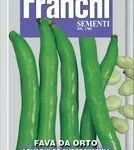
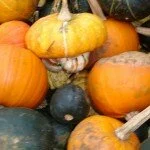


Oh stop with your lists of seeds that you’re going to grow! Your descriptions are giving me more ideas of flowers and veg to add to the list, and just when I’d told myself there would be no more seed shopping…
I know, it’s to tempting isn’t it! Not only am I going to spend too much, my windowsill is going to be overflowing with seedlings if I’m not careful.
I look foward to reading about how you fit them all in!
Fit the seeds into the seedbox or garden? Or find time for all the baking with poppy seeds? They all may be a tad tricky now I think about it!
Glad to find someone who is obviously as keen on beans as I am! And a fan of Joy Larkcom.
If you like Scarlet Emperor you should try Scarlet Empire – even better. More tender certainly.
Thanks for tip re Scarlet Empire – will add to my growing list!
Hi Andrea and thank you for leaving a comment! I love the story about your seed box.
I love the story about your seed box.  Strangely enough, I had just gone to bed this evening, but couldn’t sleep because I was thinking about how I was going to organise my seeds – which I assure you are far more chaotic than yours at the moment. Half of them are all mixed together (having worked their way out of their packets) in a heap at the bottom of a plastic bag… So I got up again and tried to find some inspiration on IKEA’s website, without success. Did a few fruitless searches on the subject of how to index/sort them, i.e. alphabetical, by sowing date or by group. Gave up and had a quick look at my blog, saw your comment, surfed to your blog and waddya know, your latest entry talks about seed boxes
Strangely enough, I had just gone to bed this evening, but couldn’t sleep because I was thinking about how I was going to organise my seeds – which I assure you are far more chaotic than yours at the moment. Half of them are all mixed together (having worked their way out of their packets) in a heap at the bottom of a plastic bag… So I got up again and tried to find some inspiration on IKEA’s website, without success. Did a few fruitless searches on the subject of how to index/sort them, i.e. alphabetical, by sowing date or by group. Gave up and had a quick look at my blog, saw your comment, surfed to your blog and waddya know, your latest entry talks about seed boxes 
How spooky! And very reassuring to hear of somebody else’s seed chaos.
Now I entirely recognise that thing that happens with seeds after the early organised, arranged in order of sowing stage, when they are left on the shelf in the greenhouse, sit in the pocket, simply disappear under the influx of new seed packets. We have been trying really hard to grow what works up here after a couple of years of starting with what we want to eat and watching plants turn up their toes. Now I know we can do beans, potatoes, beetroot, peas. Squash (which I love) don’t like us and neither sadly does asparagus. But you need to grow what loves you especially if like us you are not keen on chemical fertilisers. We also suffer from a continuing debate between him (more potatoes) and me (more flowers and more trees)!
Totally agree about concentrating on what your garden loves as well as you – and about not using chemical fertilisers. We also have a him (straight lines of numerous potatoes, carrots, leeks) and me (slightly organised chaos of fruit, veg, flowers, herbs) debate.
Oh Andrea, this reminds me that I HAVE to start thinking about my seeds too….I left them aside in a box last summer and now it’s time to organize them! I started my potatoes in the egg boxes and like you I’m looking forward to spring time for some serious planting…. and lucky me I have a proper glass house this year, but to be honest my Italian neighbor last year produced a lot of AMAZING tomatoes growing inside a green house made of recycled materials….
Look forward to hearing what you grow this year in the glass house – and what you cook with it.